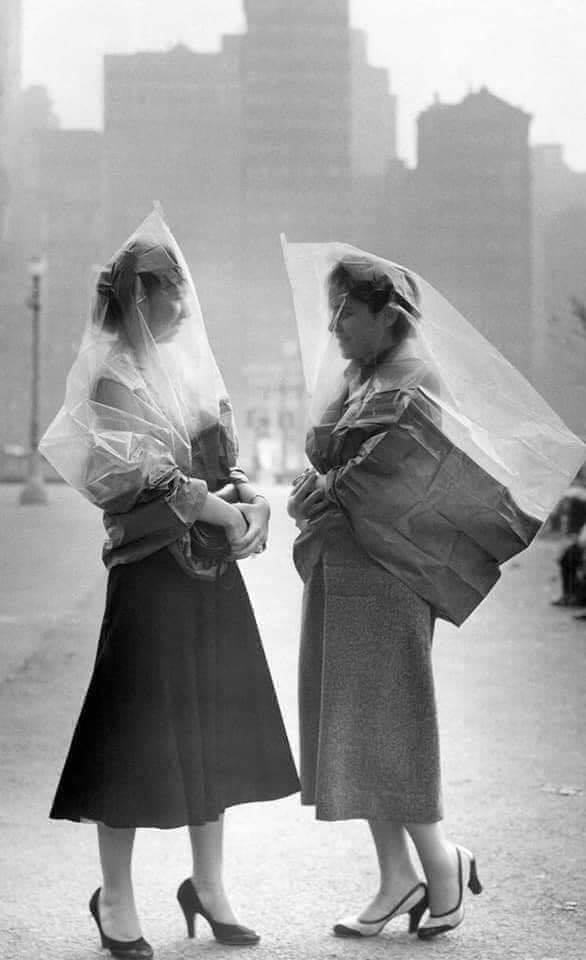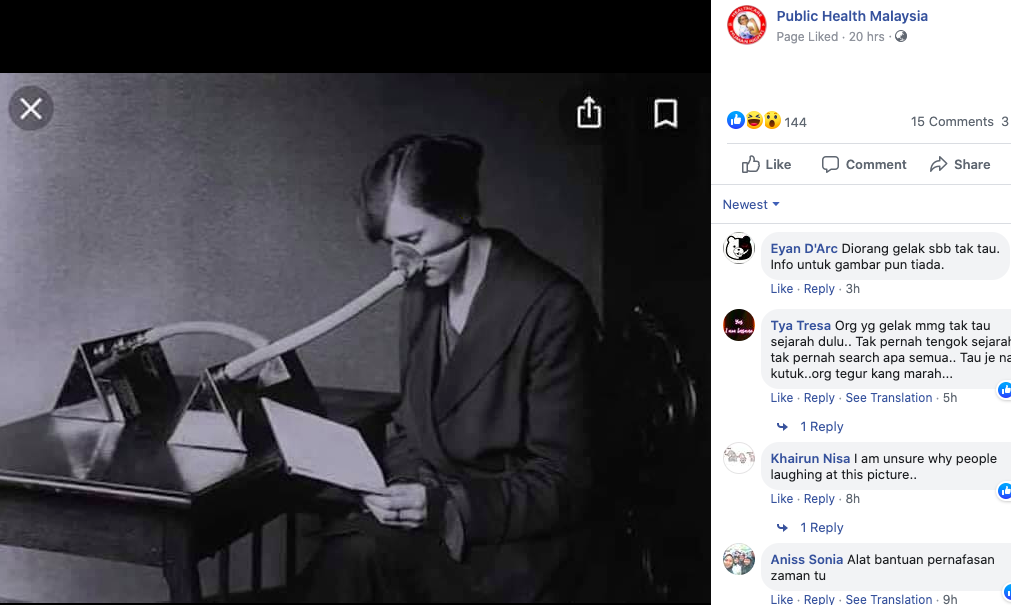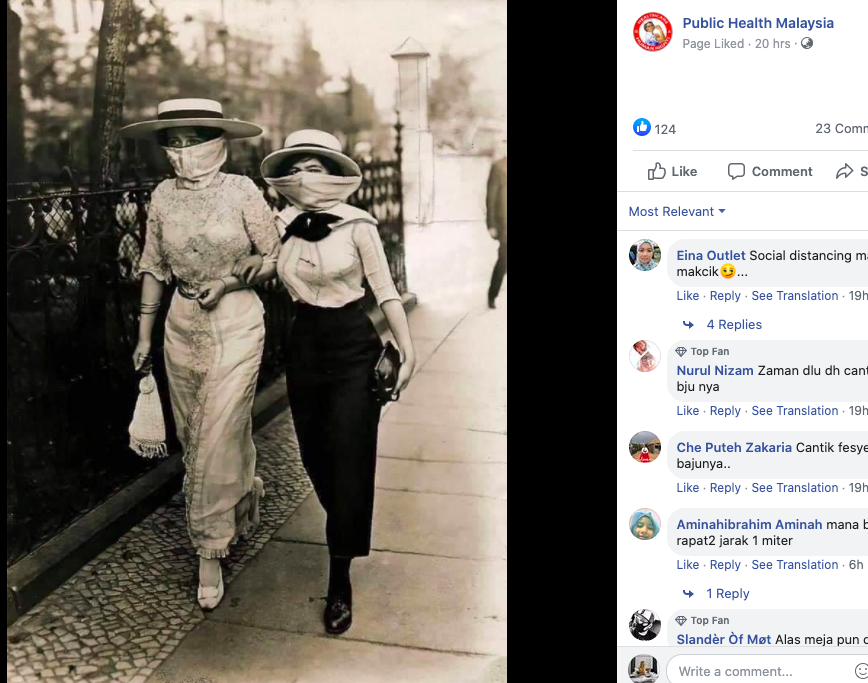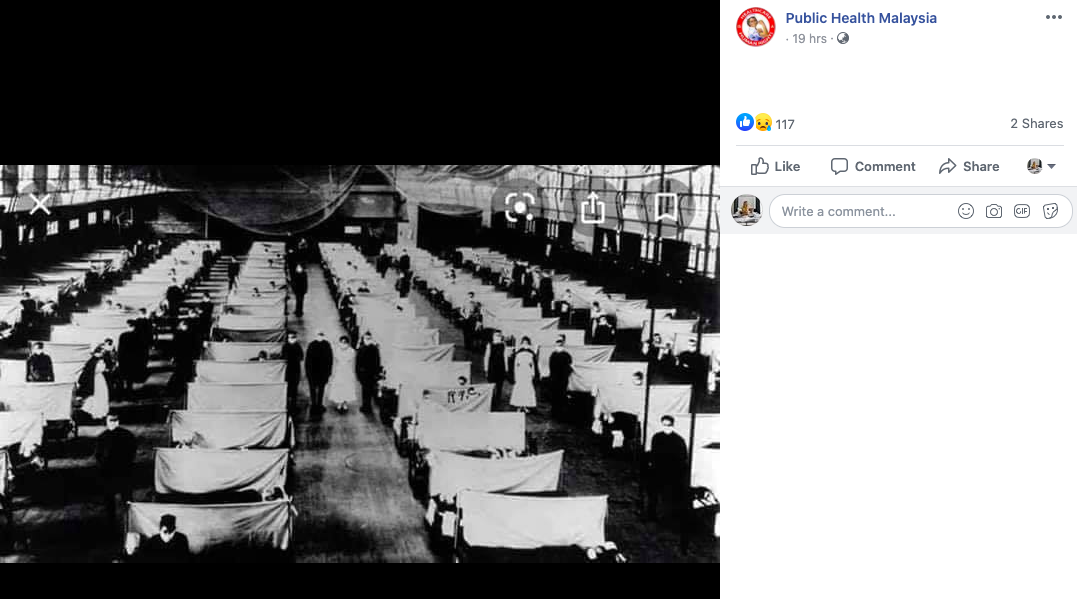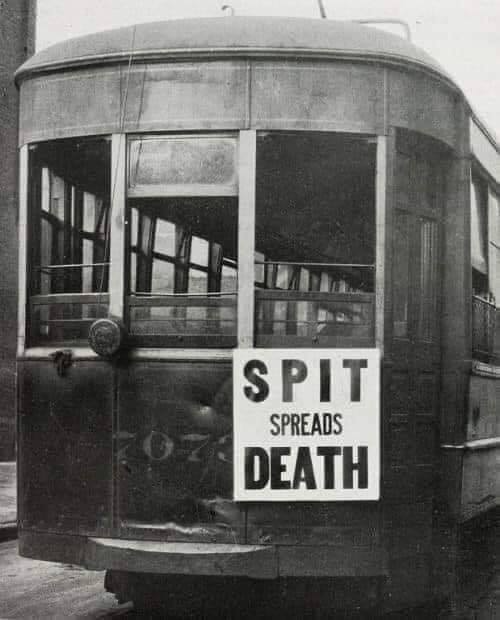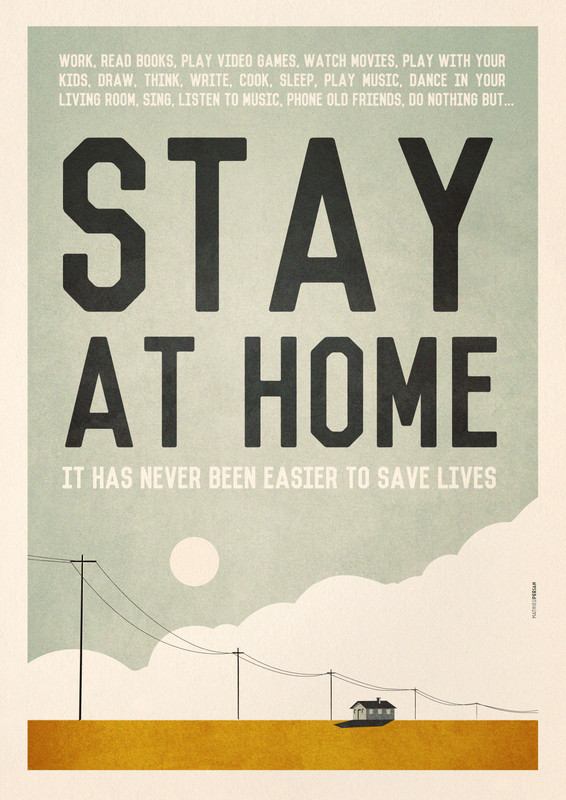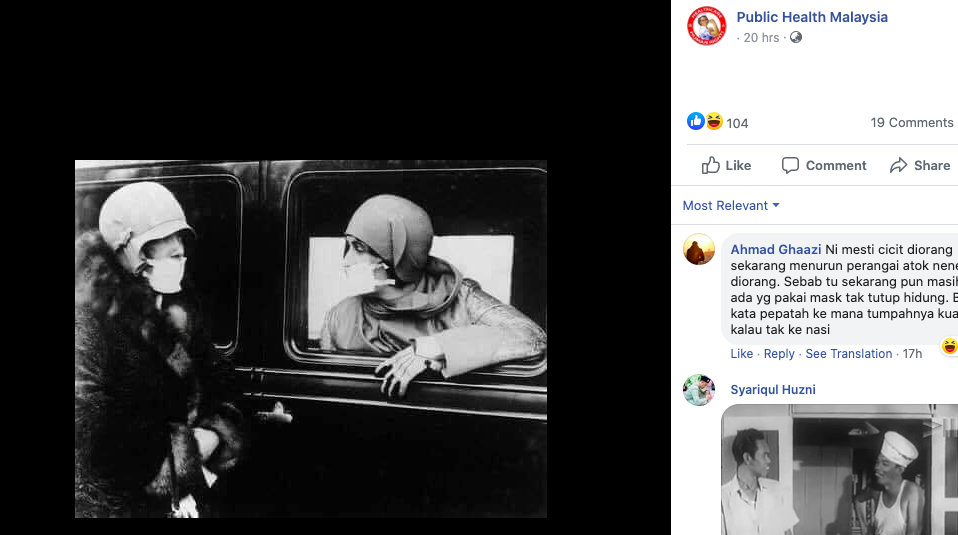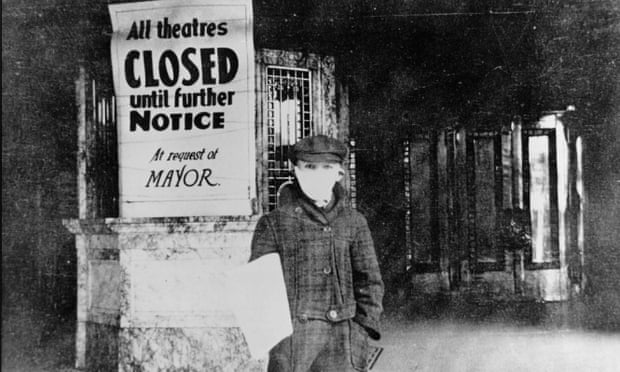Were Pandemics Really Like This In The Past?
Public Health Malaysia posted Facebook photos, which have since been shared over 11,000 times.
A series of photos have gone viral claiming to have been taken during the Spanish flu pandemic in 1918, which affected about one-third of the world's population
Public Health Malaysia posted photos, which have since been shared over 11,000 times on Facebook.
Its caption read, "Here are some pictures from the last pandemic over 100 years ago during the Spanish Flu 1918-1920. Looks like history has repeated itself. We haven't succeeded yet. Obey the SOP and suggestions that have been set."
However, not all of those photos are factually accurate. Some of them were not even taken during the pandemic of 1918.
Here's what each photo is really about:
1. Gas capes leftover from war were worn by these two women to keep them from the stinging effects of haze in Philadelphia in 1953
This photo, which was taken by a photographer from Associated Press, explains that the women wore these "war surplus gas capes" as protection from the smog that had surrounded Philadelphia in November 1953.
2. The woman in this photo wore a flu mask during the Spanish flu crisis
Getty Images, which is selling this photo on its website, describes that it was taken during the Spanish flu pandemic in 1918.
3. This image is of women who wore veils as a part of fashion in 1913
According to photo agency Alamy, which sells this photo on its website, this was taken in 1913 when women wore new veils, inspired by Turkish nose veils, as part of fashion.
4. A picture of a family who wore masks during the Spanish flu crisis of 1918
This photo of a family and cat supposedly wearing face masks has been circulating the Internet.
Although Snopes confirms that this was taken during the Spanish flu in Dublin, California between 1918 and 1920, it is unclear if the cat actually wore a mask or it just has a white face.
Unfortunately, because the photo is quite old and blurry, even the coordinator who oversees Dublin's Heritage Park & Museums Tyler Phillips says it is hard to determine from the physical photograph.
Snopes does note, however, that it isn't entirely strange that people put masks on their pets back then.
5. These plastic face shields were believed to have been worn to protect against chilling snowstorms in Montreal, Canada in 1939
Photo agency Alamy, which sells the photo here, states that it was taken in Montreal, Canada two decades after the Spanish flu occurred. The cone-shaped headgear was worn to protect against snowstorms.
6. Warehouse that was converted to keep infected patients who were quarantined in 1918
According to Getty Images, this photo was taken during the Spanish flu of 1918.
7. An image of a gas-masked mum pushing her child's pram during a surprise gas test in 1941
Getty Images reveals that this photo was taken on 9 June 1941 when a surprise gas test was run in Kingston.
8. An anti-spitting sign posted on a streetcar during the Spanish flu
According to The New York Times, this poster was stuck on a streetcar in Philadelphia in October 1918.
'Spit Spreads Death' was an exhibition that promoted the now disproved belief that illness could be spread by inhaling dried saliva particles.
Back then, posters and signs were placed on lamp posts and streetcars. Offenders who went against these anti-spitting measures were fined.
10. Two women wearing face masks during the Spanish flu pandemic
A description of this photo on Getty Images states that these two women wore face masks during the outbreak after World War I.
11. The Spanish flu pandemic required all theatres to be closed
During the flu outbreak, which was first identified in Spain in 1918, all theatres were closed.
